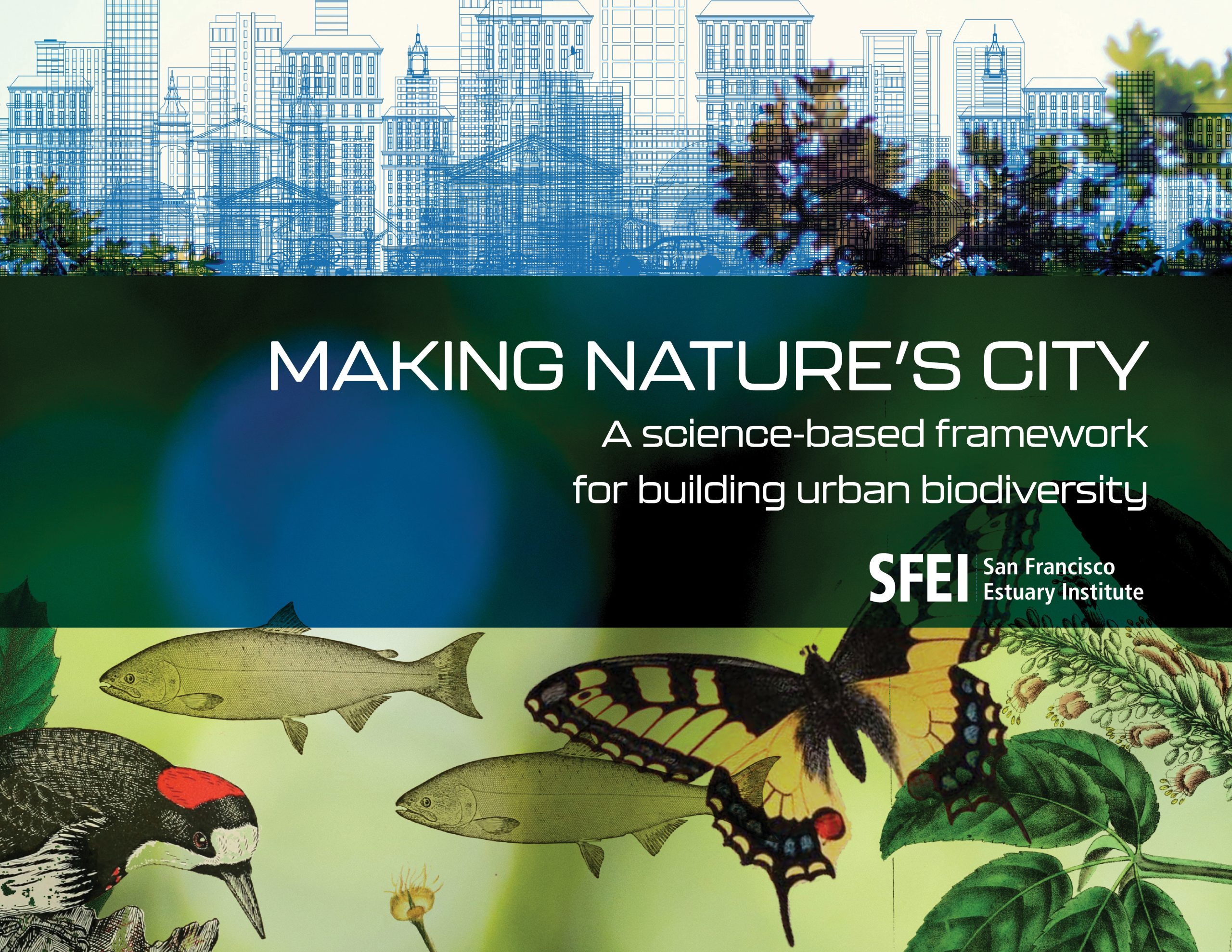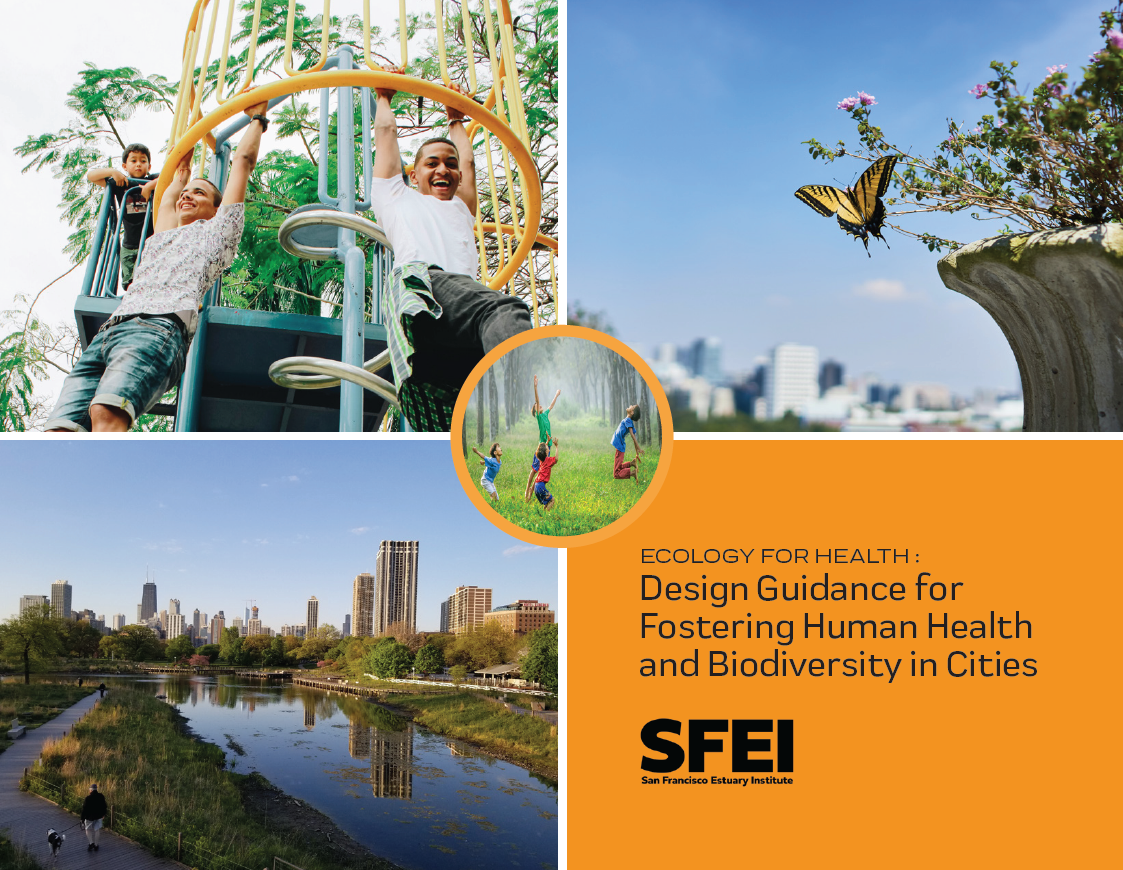How to Use This Toolkit
The Making Nature’s City Toolkit distills biodiversity science and urban design strategies for supporting biodiversity and human health in urban green spaces. It focuses on four dimensions: biodiversity science, urban planning, site design, and detailed design. Within each dimension, it offers practical strategies to analyze or create urban green areas for biodiversity conservation and human health support.
Toolkit Components
Strategies
The strategies to Make Nature’s City synthesize global research into a science-based approach for supporting nature in cities. The resulting Urban Biodiversity Framework identifies seven landscape elements that work together to maximize biodiversity. Here you can learn about the framework and how to apply it to generate both biodiversity and human health outcomes at three scales of intervention: urban planning, site design, and detailed design.
Precedents
Precedents offer a high-level view of what other cities are doing to support urban ecosystems. By sharing case studies from around the world, the list of precedents demonstrates how scientific concepts and local expertise can be applied to support nature in your city.
Here you can search our curated list of urban biodiversity projects and plans from around the world.
Analyze Your City
As a city or community considers supporting urban biodiversity, a fundamental first step is to conduct spatial analyses for each of the seven elements. The resulting insights can guide the development of a biodiversity plan, where the city identifies opportunities and prioritizes interventions that will generate meaningful outcomes for the region’s urban biodiversity.
Foundational Documents

Making Nature's City
A science-based framework for building urban biodiversity (2019).

Ecology for Health
Design Guidance for Fostering Human Health and Biodiversity in Cities (2023).
Key Concepts
The variety and abundance of species within a given area. In this report, we focus specifically on native plant and animal species diversity (although genetic, functional, and ecosystem diversity are also important measures) in urban areas.
An area with grass, trees, or other vegetation primarily dedicated to aesthetic, recreational or habitat preservation purposes in a city.
Actions taken to increase vegetation cover in urban areas. Some examples include street tree planting; stormwater retention basin and green infrastructure installation; park creation, protection, and enhancement; backyard gardening; commercial landscaping; and pollinator plantings.
Each species has particular needs for suitable habitat, including soil moisture, nutrients, and sun exposure for plants; availability of host plants for insects; nutrients for fungi; and appropriate breeding and foraging areas for birds. Wildlife species also vary in the size of habitat patches they require to thrive. Here we assume that greenspace area is a reasonable proxy for habitat extent.
Habitat quality is a critical parameter defining how well an area can support a particular wildlife species. Presence of native plants and vegetation structure that matches historical vegetation communities can help boost habitat quality, as can biodiversity-friendly management practices. Human disturbance can particularly limit the quality of sensitive habitats. For example, in wetlands, trampling can compact the soil and urban runoff can degrade water quality, resulting in poor habitat quality.
Connectivity represents the ease with which mobile wildlife can move across the landscape, and can be measured as the distance between patches of greenspace and the absence of barriers blocking movement.
Plant and animal species that have evolved in a specific geography (including nearby species that may be appropriate in the near future, given anticipated range shifts as the climate changes).
An area of high human population and significant built infrastructure. In this report, “urban areas” and “cities” are used interchangeably.
Tradeoffs and Limitations
The tension between the needs of wildlife and the needs of people are real, and we highlight them throughout the three scales of intervention where they apply to a particular type of greenspace. Many of the trade-offs fall into these main categories:
In places that both allow recreational use and attract wildlife, humans can disturb wildlife intentionally or unintentionally, potentially causing animals to expend energy being on alert or fleeing.
Residents may have safety concerns about wildlife. Whether a concern is actual or perceived, wildlife management and/or public education may be needed.
Urban greenspaces that are perceived as high quality habitat by wildlife, but do not support survival and/or reproduction, are known as ecological traps. For example, planting a grove of fruit trees in a central business district may attract birds, who end up colliding with large reflective storefront windows.
Some human uses are best served by highly simplified greenspace, such as turf fields, which provide very little biodiversity value. Even where people and wildlife may both benefit from the same cover type (e.g., forest), details of the design may differ. For example, dense vegetation that provides thick cover may be preferable for wildlife, while people may prefer open vegetation that allows clear views for safety.
